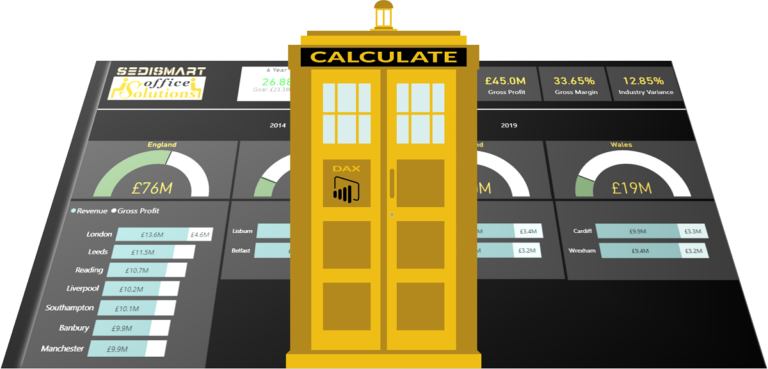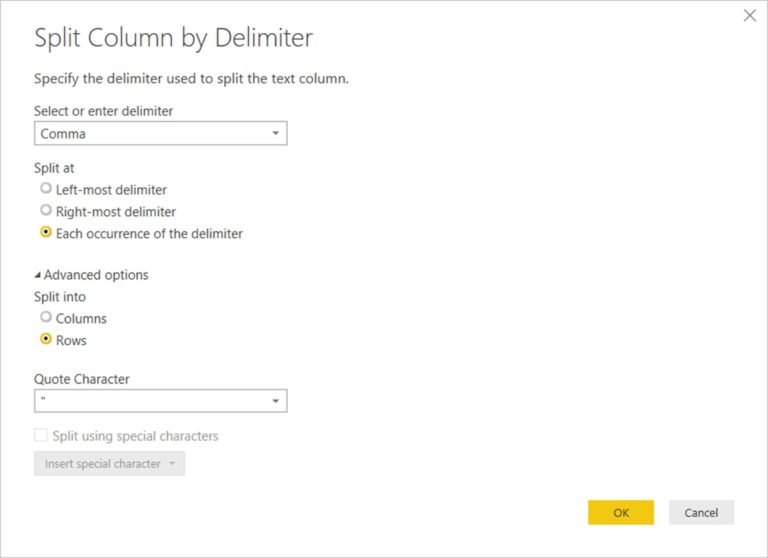Secret Strategies Revealed – How to Rise to the Top in Group Rankings with Power BI
In today’s data-driven world, Power BI has become an essential tool for businesses and professionals to gain insights from their data. One of the key aspects of Power BI is the ability to collaborate and share reports through groups. Group rankings play a vital role in determining the visibility and success of your reports within the Power BI community. In this article, we will uncover the secret strategies that can help you rise to the top in group rankings with Power BI.
I. Introduction
When you publish a report in Power BI, it gets associated with a group. Groups allow users to organize and share reports with specific teams or communities. Group rankings determine the prominence and visibility of your reports within these groups. The higher your group ranking, the more likely your reports are to be discovered by other users, leading to increased engagement and recognition.
II. Understanding Group Rankings in Power BI
Group rankings are calculated based on various factors, including report views, likes, comments, and shares within a specific group. Power BI utilizes an algorithm to determine the relevance and popularity of reports within a group. Achieving a high group ranking requires a combination of quality content, user engagement, and effective optimization techniques.
III. Key Strategies for Improving Group Rankings in Power BI
A. Creating Engaging and Relevant Content
Understanding your target audience:
To create content that resonates with your audience, it’s crucial to understand their needs, preferences, and pain points. Conducting user research and gathering feedback can help you tailor your reports to meet their expectations.
Crafting visually appealing and informative reports:
Visual elements, such as charts, graphs, and infographics, play a significant role in capturing the attention of users. Focus on presenting data in a visually appealing manner while ensuring clarity and relevance.
Incorporating interactive features and storytelling elements:
Make your reports more interactive by adding features like drill-through actions, bookmarks, and custom visuals. Additionally, storytelling techniques, such as narratives and annotations, can help create a compelling narrative around your data.
B. Optimizing Data Models and Datasets
Ensuring data accuracy and cleanliness 1. Ensuring data accuracy and cleanliness:
To improve your group rankings in Power BI, it’s essential to ensure the accuracy and cleanliness of your data. Start by performing data cleansing tasks such as removing duplicates, handling missing values, and resolving inconsistencies. This will enhance the overall quality and reliability of your reports.
2. Implementing efficient data modeling techniques:
Efficient data modeling is crucial for optimizing performance and improving the user experience. Utilize Power BI’s data modeling capabilities to create relationships between tables, define hierarchies, and implement calculated columns and measures. By structuring your data model effectively, you can enhance the speed and efficiency of your reports.
3. Leveraging Power BI’s query folding capabilities:
Power BI’s query folding feature allows you to push data transformation tasks back to the data source, optimizing query performance. Take advantage of this functionality by utilizing query folding whenever possible. It helps reduce the amount of data transferred between Power BI and the data source, resulting in faster report loading times.
C. Leveraging DAX Formulas and Measures
1. Enhancing calculations and aggregations:
DAX (Data Analysis Expressions) is a powerful formula language in Power BI that enables advanced calculations and aggregations. By utilizing DAX formulas effectively, you can perform complex calculations, create custom measures, and derive meaningful insights from your data.
2. Utilizing advanced DAX functions:
DAX offers a wide range of functions to manipulate and analyze data. Explore functions such as CALCULATE, FILTER, and ALL to create dynamic and interactive reports. Understanding and utilizing these advanced DAX functions can significantly enhance the capabilities of your Power BI reports.
3. Implementing time intelligence calculations:
Time intelligence functions in DAX allow you to perform calculations based on time periods, such as year-to-date, month-over-month, or rolling averages. Leveraging these functions enables you to gain deeper insights into trends and patterns in your data, enhancing the value of your reports.
D. Utilizing Advanced Visualizations and Customization
1. Exploring different visualization options:
Power BI offers a wide range of visualization options, including bar charts, line graphs, maps, and more. Experiment with different visualizations to present your data in the most effective and engaging way. Choose visuals that best represent your data and facilitate understanding for your audience.
2. Creating custom visuals using Power BI marketplace:
The Power BI marketplace provides a collection of custom visuals created by the community. Explore the marketplace to discover unique visuals that can add a wow factor to your reports. Custom visuals help you tell a story with your data and differentiate your reports from others.
3. Enhancing user experience with tooltips, bookmarks, and themes:
Tooltips allow you to provide additional context and information when users hover over specific data points. Bookmarks enable you to create interactive presentations or guided tours within your reports. Additionally, applying themes to your reports provides a consistent and visually appealing look and feel.
E. Collaborating and Engaging with the Power BI Community
1. Joining Power BI user groups and forums:
Engage with the Power BI community by joining user groups and forums. Participate in discussions, share your knowledge, and learn from others. Collaborating with like-minded individuals can provide valuable insights, tips, and tricks to improve your Power BI skills.
2. Participating in data challenges and competitions:
Sharpen your Power BI expertise by participating in data challenges and competitions. These events not only help you showcase your skills but also provide an opportunity to learn from others’ approaches and techniques. Engaging in friendly competition can push you to explore new strategies and excel in your reporting.
3. Sharing knowledge and learning from others:
Don’t hesitate to share your knowledge and insights with the Power BI community. Write blogs, create tutorials, or contribute to online resources. By sharing your expertise, you not only establish yourself as an authority but also contribute to the growth and knowledge-sharing within the community. In return, you can learn from others’ experiences and stay updated with the latest trends and advancements in Power BI.
IV. Tracking and Monitoring Group Rankings
Tracking and monitoring your group rankings is essential to understand the impact of your strategies and make necessary adjustments. Power BI provides usage metrics and sharing insights that allow you to analyze the performance of your reports within groups. Monitor metrics such as views, likes, comments, and shares to gain insights into user engagement and identify areas for improvement.
V. Conclusion
Achieving high group rankings in Power BI requires a combination of effective content creation, optimization techniques, and active community engagement. By following the strategies outlined in this article, you can enhance the visibility, engagement, and recognition of your reports within the Power BI community. Stay committed to providing valuable and engaging content, continuously improve your data modeling and visualization skills, and actively participate in the Power BI community to rise to the top in group rankings.
VI. FAQs
Q1: How long does it take to improve group rankings in Power BI?
The time it takes to improve group rankings can vary depending on various factors such as the quality of your content, user engagement, and competition within the group. Consistently applying the strategies mentioned in this article and monitoring your progress will gradually lead to improved rankings over time.
Q2: Can I improve my group rankings without engaging with the Power BI community?
While it’s possible to improve your group rankings by focusing solely on content quality and optimization, engaging with the Power BI community can provide additional benefits. Collaborating, sharing knowledge, and learning from others can help you gain valuable insights and stay updated with the latest trends, ultimately contributing to your overall growth and success.
Q3: Are there any specific metrics I should focus on when monitoring group rankings?
Monitoring metrics such as views, likes, comments, and shares can provide valuable insights into the engagement and popularity of your reports. Additionally, pay attention to the feedback and comments received from users as they can provide valuable suggestions for improvement.
Q4: How often should I update and optimize my Power BI reports to maintain high group rankings?
Regularly updating and optimizing your Power BI reports is essential to keep them relevant and engaging. Aim to update your reports whenever there are significant changes in data, business requirements, or Power BI features. Continuous optimization and improvement are key to maintaining high group rankings.
Q5: Is it necessary to create custom visuals to improve group rankings?
Creating custom visuals is not a requirement, but it can certainly enhance the visual appeal and uniqueness of your reports. Custom visuals allow you to present your data in innovative and engaging ways, making your reports stand out among others. However, it’s important to ensure that the visuals are relevant and add value to the overall user experience.

















